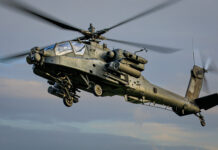The Royal Netherlands Army has ordered three Improved Ribbon Bridge (IRB) floating bridge systems from General Dynamics European Land Systems (GDELS), the company announced on 20 July 2023.
The contract was signed at the end of June and affirmed on 20 July during the famous civil/military ‘Vierdaagse’ International Four Days Marches around Nijmegen in a ceremony at Cuijk, where Dutch military engineers traditionally bridge the Meuse River for the marching participants. The Vierdaagse event was used to demonstrate the potential of the IRB system.
The order, the value of which GDELS declined to disclose, covers bridge sections with a total length of over 225 m together with support boats manufactured by Birdon USA. GDELS won the contract after a competitive tender with two other European military bridge manufacturers: CEFA and CNIM.
The IRB provides wet-gap crossing capabilities either as a floating bridge or as a multi-bay raft. It can accommodate loads up to MLC 80T/96W and can therefore enable all types of military vehicle, including Leopard 2, M1A2 Abrams and the Challenger 2 main battle tanks, to cross a gap.

The new Dutch IRB systems will replace older pontoon bridges from 2025, providing the Dutch Engineer (‘Genie’) Corps with a capability in accordance with current military standards. All NATO vehicles can cross the system and, due to the same connectors being used, the pontoons are fully interoperable with those of other nations, including US, German and Swedish systems. Bridge sections can therefore easily be combined during operations, increasing speed of movement and military mobility.
The IRB system is also connectable through a coupling device with the widely used M3 amphibious bridge system used by Germany, the United Kingdom, Latvia and Sweden, with the latter having recently ordered an additional number of M3 units.
The IRB will significantly strengthen the Dutch army´s gap-crossing capabilities, making it an asset recently re-identified as a crucial prerequisite to move and deploy forces across the European theatre independent of fixed civilian infrastructure. The pontoon systems can also be used for disaster relief, which was included in the Dutch requirement.
Peter Felstead










